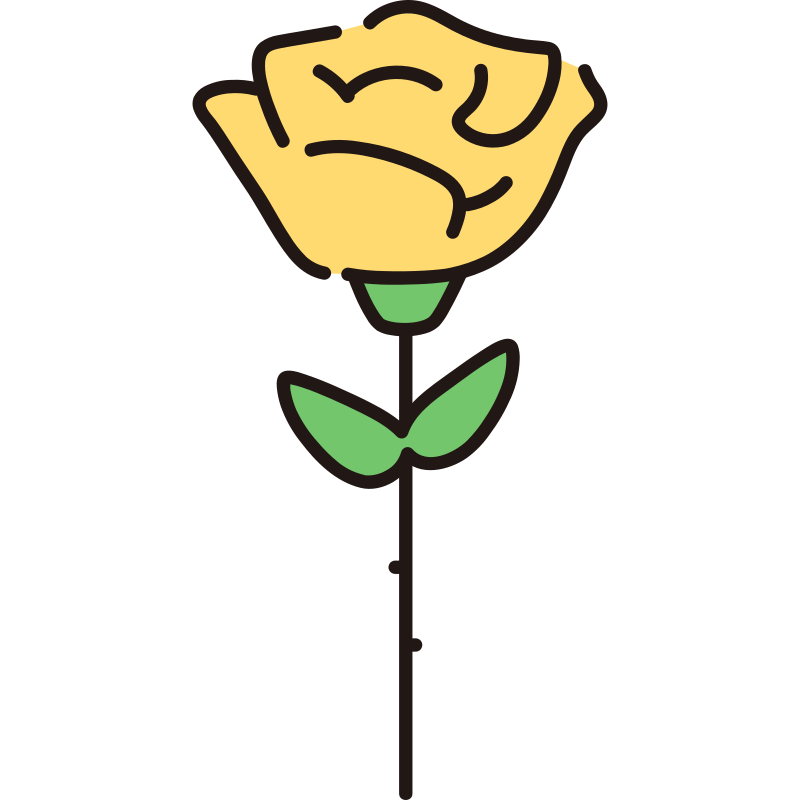Bell bottoms were in. The hippie movement was well-known. The explosion in popularity of the commercial Internet was still another couple of decades away. Now everything 70s is new again.

Featuring Retro Aesthetic Patterns by Designnina Shop
Maybe it’s the far-out sensibilities of this decade that make it appealing once more in our tech-heavy 21st century.
The History of 70s Patterns and Design
When we reminisce about the 70s, it’s almost like going back into a time warp because society has changed so drastically since then. Whereas it’s hard for someone born in the 21st century to picture themselves living in this decade, it brings back nostalgic memories for those who experienced it the first time around.

Bell bottoms were in. Technology (as we know it today) was in its infancy. The hippie movement was well-known. The explosion in popularity of the commercial Internet was still another couple of decades away.
This removal from today’s tech stressors might be the reason visual artists of the day could dig deep and hone in on textures that would really connect with their audiences, regardless of whether those audiences were art lovers or just consumers.
To understand why patterns from this decade are staging a comeback, it’s crucial to get a sense of what inspired these décor sensibilities in the first place. Here are some choice examples of this style, so you can get up to speed:
Back in the 70s, you had upheaval in the U.S. as people from different walks of life came to realize that the system was rigged against them. In a geopolitical sense, you could also apply that to many parts of the world. To say that this sounds familiar today in contemporary times would be to cliché. However, looking around at today’s social changes and global developments, it’s quite tempting to draw a comparison. Then again, upheaval is a frequent theme in human history, cutting across all cultures.
That said, it’s against this backdrop that 70s design developed. When there’s a lot going on in the culture, design is usually one of the first industries to try to express these changes.
While the 60s still had their fill of more conservative styles like Mid-century Modern, by the end of the decade, the psychedelic stylings of the hippie movement signaled a more radical approach to design. To be sure, some of the traits of the 70s were just continuations of the hippie mentality of the prior decade. Instead of the tried, tested, and true shapes and colors of the post-World War II aesthetic, the 70s flirted with experimentation and playfulness.
This sense of experimentation and play shone through in something as approachable as even the paper flower pattern that we now associate with the decade.

Each of the aforementioned is an aesthetic that can be typified by minimalism, orderliness, and neatness. For example, Mid-Century Modern has a classic, almost timeless feel that emphasizes usability instead of ornamentation, while Swiss Design relies on the use of the grid to organize its design contents in its visual language. And Atomic Age Design features sleek, curvy shapes and lines, which are simple.

- Self-expression
- Individualism
- Psychedelic excesses
- Highly saturated colors
- Swirls
- Geometric shapes and forms
- Flower or plant-based motifs and patterns
- Trippy typography
- Paisley patterns (boteh or buta)
It must be said that 70s aesthetics in everything from wrapping paper patterns to textiles fail to diverge with trends of the past in one, important regard: the focus on nature. Not a new concept in design movements at all, nature-based themes have been front and center in many aesthetic movements for the past few centuries.
For example:
- Art Nouveau — This style freely borrowed from nature as its artists and designers used plant life and flowers as their muses, oftentimes in very stylized (as opposed to realistic) depictions.
- Scandinavian Design — Another movement strongly focused on the environment around us, it hailed from the Nordic countries (ie, Scandinavia). The themes of trees and natural wood, along with green colors, are a hallmark in this minimalist style from Europe.
- Impressionism — This art style was revolutionary for its time (circa the late 19th century) because its founders painted outdoors. This was markedly different from the usual custom at the time, which was only sketching outdoors and then taking the unfinished work into the painter’s studio to finish it properly. Claude Monet and Pierre-August Renoir wanted to use direct sunlight and an airier approach to painting.
Have you ever noticed the sheer number of floral motifs in 70s patterns?
That’s because the back-to-nature obsession was highly important to designers of this decade, influenced by hippie culture, which rejected consumerism and was searching for a simpler style of life. Plus, there was also the oil crisis of 1973, which furthered this embrace of environmentalism. This even carried over into 70s architecture, where more and more homes of that era were being equipped with (for the time) energy-efficient improvements. Interior design attributes like skylights and huge windows can be traced back to this era and consciousness.
However, in all fairness, when the nature themes of the 70s style were done to excess, it all turned into overkill. For example, a typical room of that decade may have featured wicker furniture, exposed ceiling beams, and even hanging plants—an acquired taste, to be sure.
When you’re turning over a dotted paper pattern in your hands and appreciating its green-themed design influences, know that the environmental consciousness of the 70s had something to do with that.
A Closer Look at the Patterns of the 70s
There’s a multitude of eye-popping patterns in the designs of this decade that demand a closer look.
Here’s a rundown of just some of these mesmerizing textures.
Mandala
Mandalas always invoke an air of mysticism and a higher state of consciousness. That and, of course, they are aesthetically intriguing to feast your eyes on. A mandala is nothing more than an often elaborate alignment of geometric patterns or designs, which stands for the heavens or various deities in Buddhist, Shinto, Jain, or Hindu traditions. This symbol’s sense of mystery is precisely what attracted Western counterculture types, such as hippies, in their search for something other than consumerism.
From a design perspective, a 70s mandala pattern is a sight to behold. It’s a study in symmetry, with all the intricate points of the outermost portion of the design an equal distance from the center of the entire composition. Figuring into the mix as well is the explosion of rich, vivid colors that take such a composition to another level.
Paisley
The paisley pattern is another frequent sight in 70s-inspired patterns. We can also thank the hippie movement of this era for popularizing this aesthetic in papers, clothing, and artworks related to the decade.
An ornamental textile aesthetic, paisley is of Persian origin and refers to a teardrop-shaped design that features a prominent, curved upper end. Interestingly, however, the etymology of the word “paisley” itself is Western: It’s a reference to the Scottish town of the same name that was a center of production of this textile.
Culturally, paisley became popular due to the Beatles’ association with the pattern, along with its increasingly close association with psychedelia, another aesthetic that defined the 60s and 70s.

From a strict style point of view, this pattern always implies a sense of motion or direction, with the curved, upper end free to slant in any direction. The pattern was originally used by the Persians and even ancient Indo-Iranians to symbolize eternity and life in the Zoroastrian tradition. In the West, it was in clothing where it was popularized. In everything from shirts to shawls, this symbol was seen in highly colorful, lush presentations.
Flower Power
As soon as you hear the phrase “flower power,” you generally get the impression of social permissiveness, psychedelia, and joy. Flowers and nature are repetitive themes in the 70s design.

The symmetrical and equidistant arrangement of petals around the center of the flower makes flower motifs well-suited for a symbol of design from this decade.








